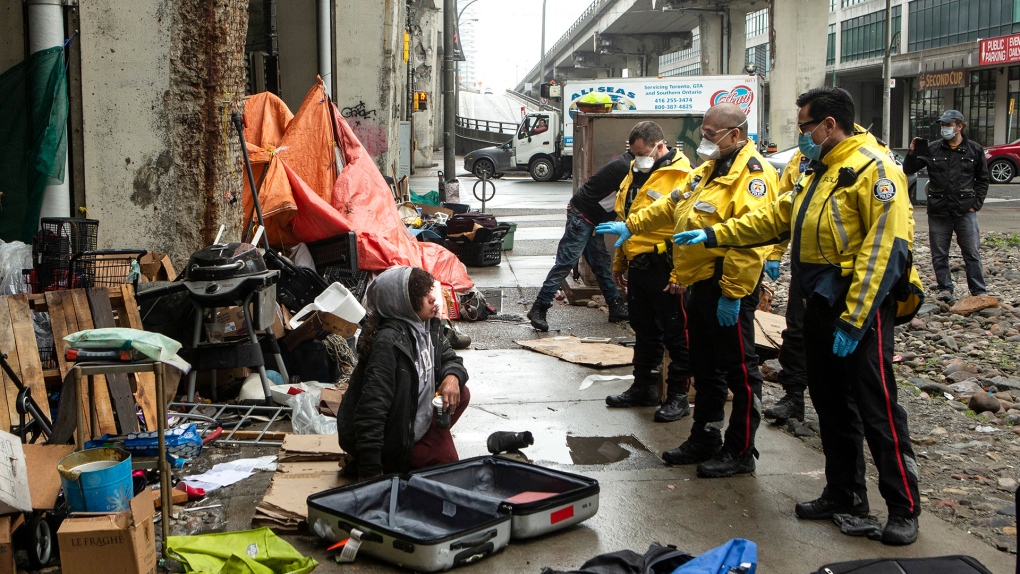City unveils winter homelessness strategy as shelter system already stretched beyond capacity
After a summer and fall that saw refugee claimants with nowhere to go sleeping on downtown streets, Toronto officials say the demand for beds will increase this winter. Already, Canada’s largest shelter system is turning people away.
As of October, the city is sheltering 10,700 people and turning away approximately 275 others on a daily basis, said Gord Tanner, the city’s director of homelessness initiatives, while sharing the city’s winter homelessness plan on Tuesday.
About 40 per cent of the people in shelters are refugee claimants, Tanner said, and the city doesn’t have a clear picture of how many more Torontonians might need shelter space as temperatures continue to drop.
“When cold weather makes living outside difficult and potentially life-threatening, we want to be able to accommodate the significant need,” he said. “But the city’s emergency shelter system is at capacity, our shelter system is full, and the strain on the system is only increasing.”
Tanner says the city is mobilizing its limited resources to expand services from November through April. The city will activate four warming centres and a 24-hour respite site this winter, he said, and shelter beds will be moved closer together to make space for about 180 new spaces. Another 275 housing “opportunities” will be opened up through supportive homes and available social housing units, the city said in a news release accompanying the announcement.
Starting in mid-November, warming centres will be activated whenever the temperature drops below -5 C, he said, a change from previous winters when centres opened at -15 C. The 24-hour respite site will open Nov. 15 and have 40 spaces.
The four warming centres will be located at 136 Spadina Road, 75 Elizabeth Street, 15 Olive Avenue and 885 Scarborough Golf Club Road.
Long-term solutions require more funding: Tanner
There is no long-term solution on the horizon without help from higher levels of government, Tanner said. The city has been calling repeatedly for federal support to help cover its $1.5 billion budget hole.
Tanner says it’s the same ask the city made before last winter when the shelter system was also under strain.
“One year later, that statement is more true than ever before,” he said. “The unmet need has become worse.”

In September, Toronto asked the federal government for $750,000 to compensate churches and community organizations who had been housing refugee claimants. However, a city spokesperson said the government missed a deadline to provide the cash.
At the time, Immigration, Refugees and CItizenship Canada said it already allocated an extra $97 million in funding to Toronto this summer to help provide interim housing for asylum claimants.
Tanner says the city projects it will spend $741 million in providing emergency shelter support this year.
CBC/MS









Redes Sociais - Comentários